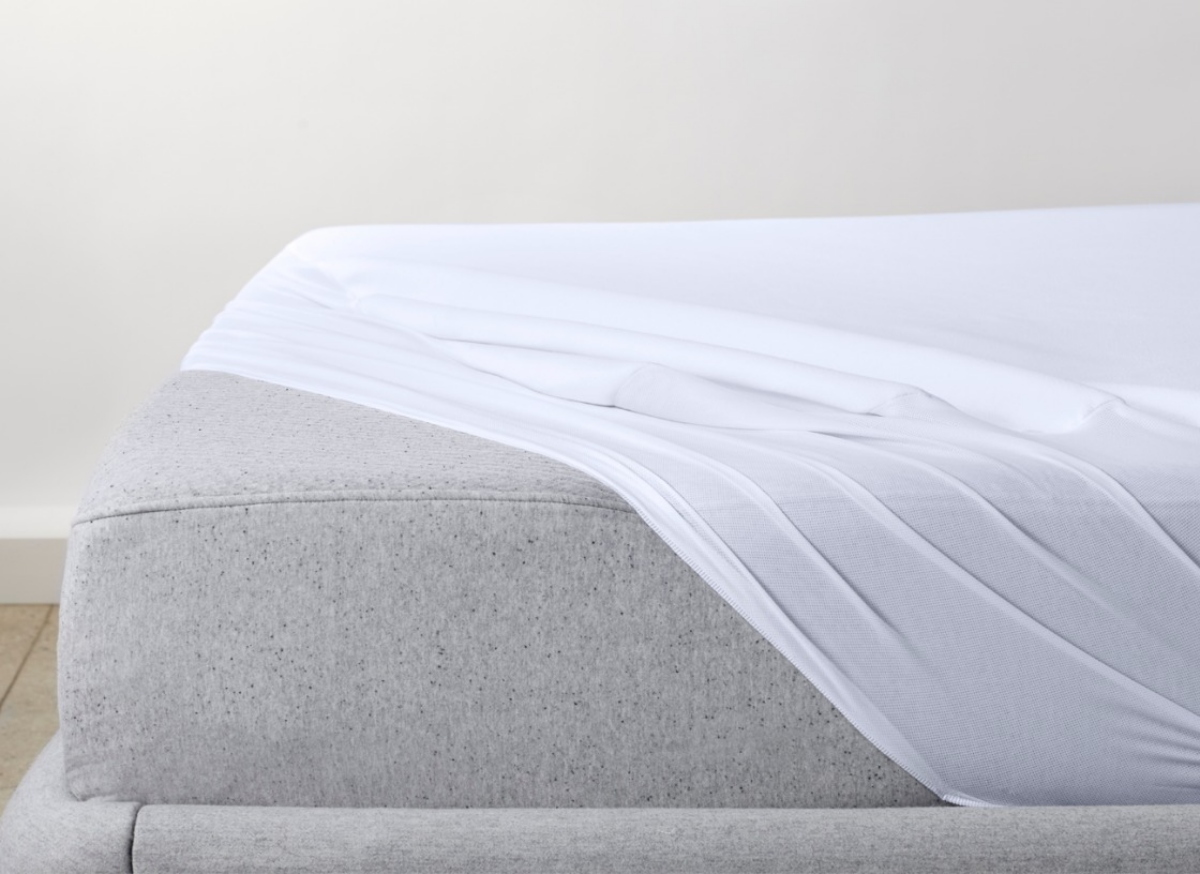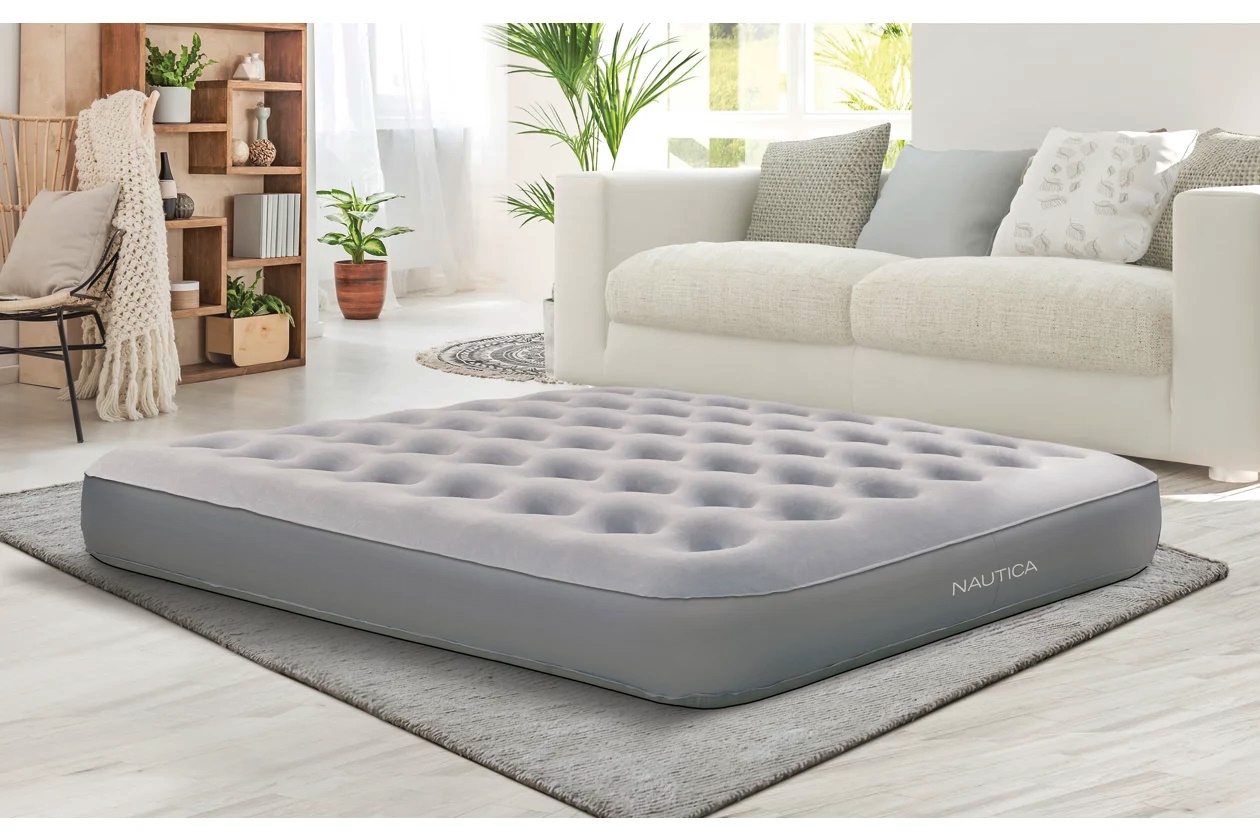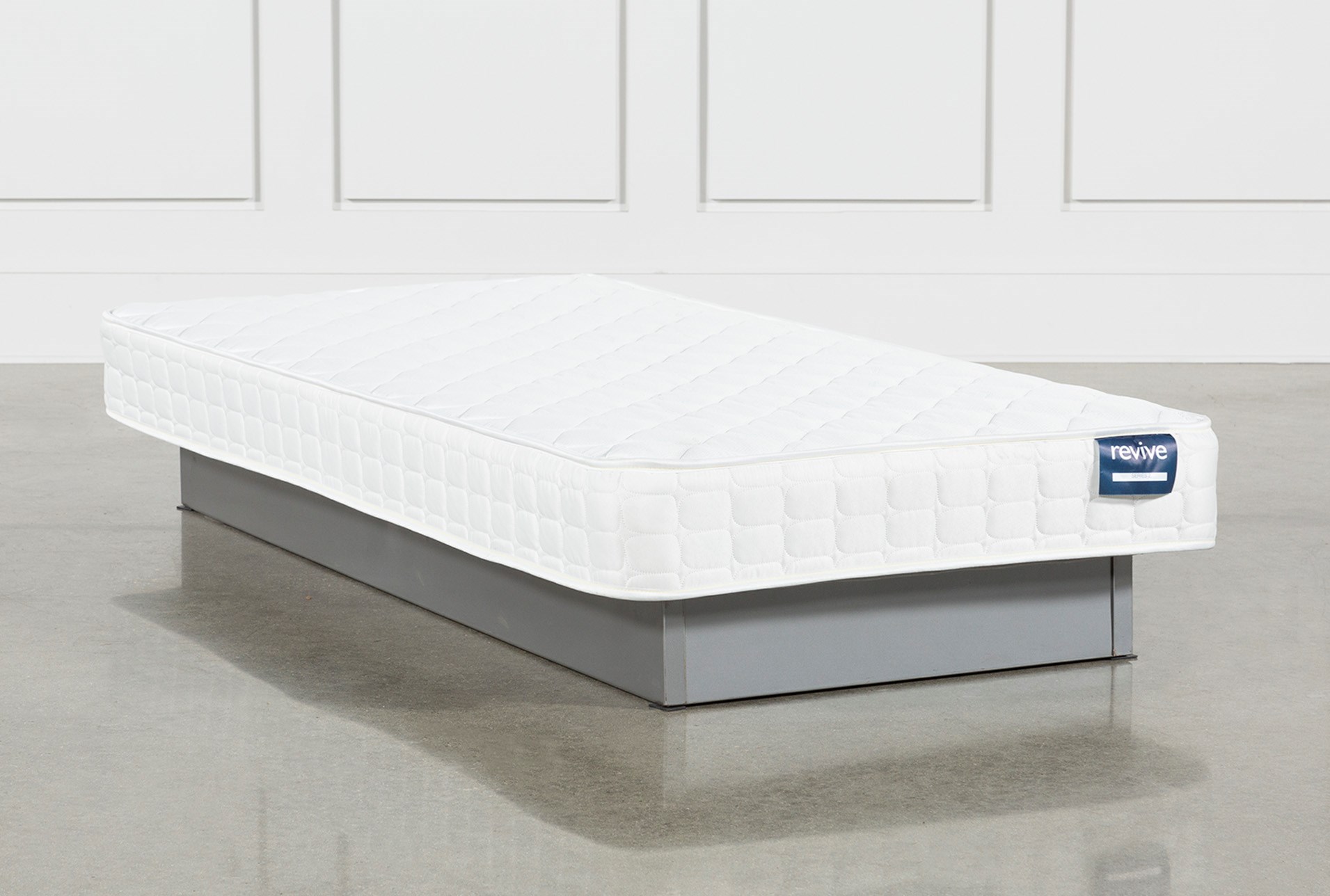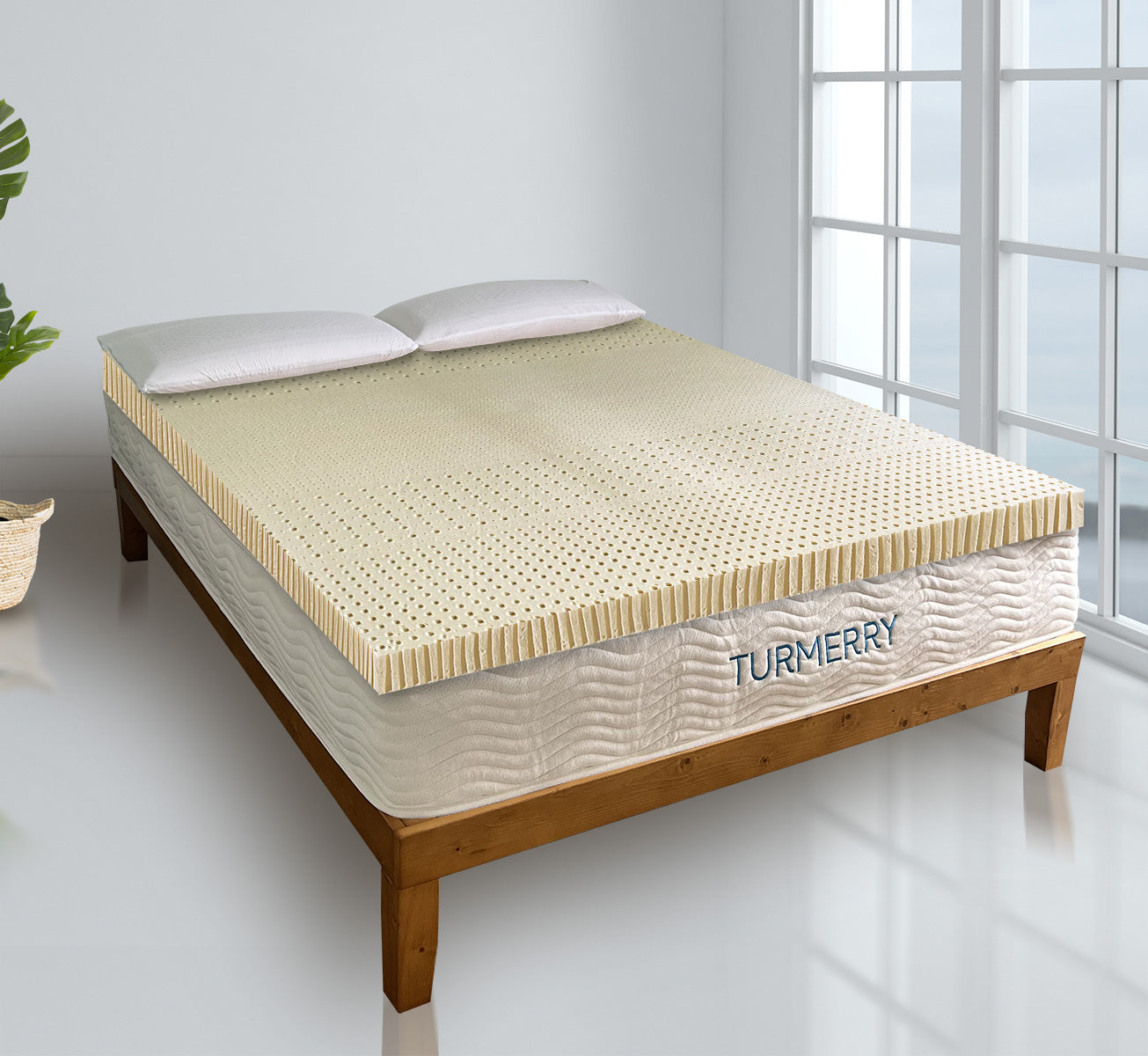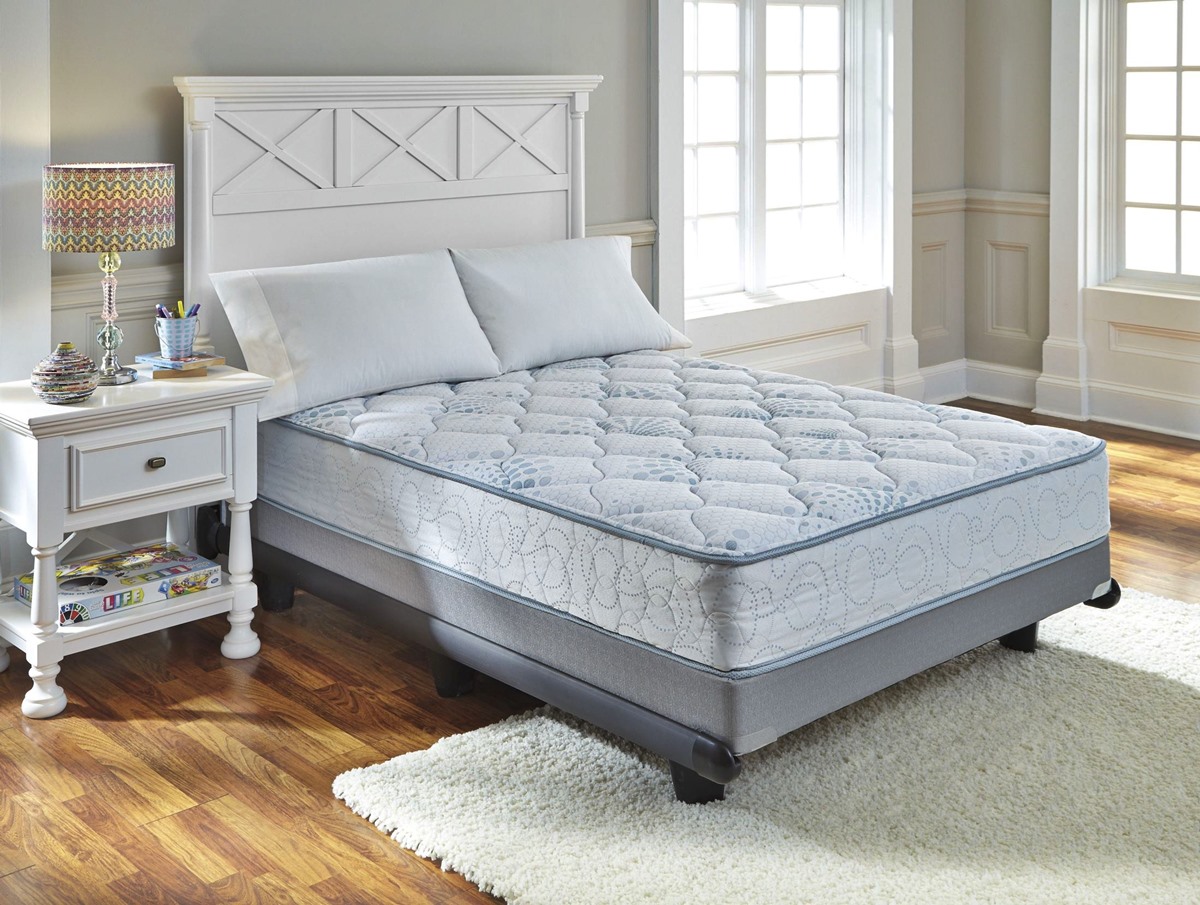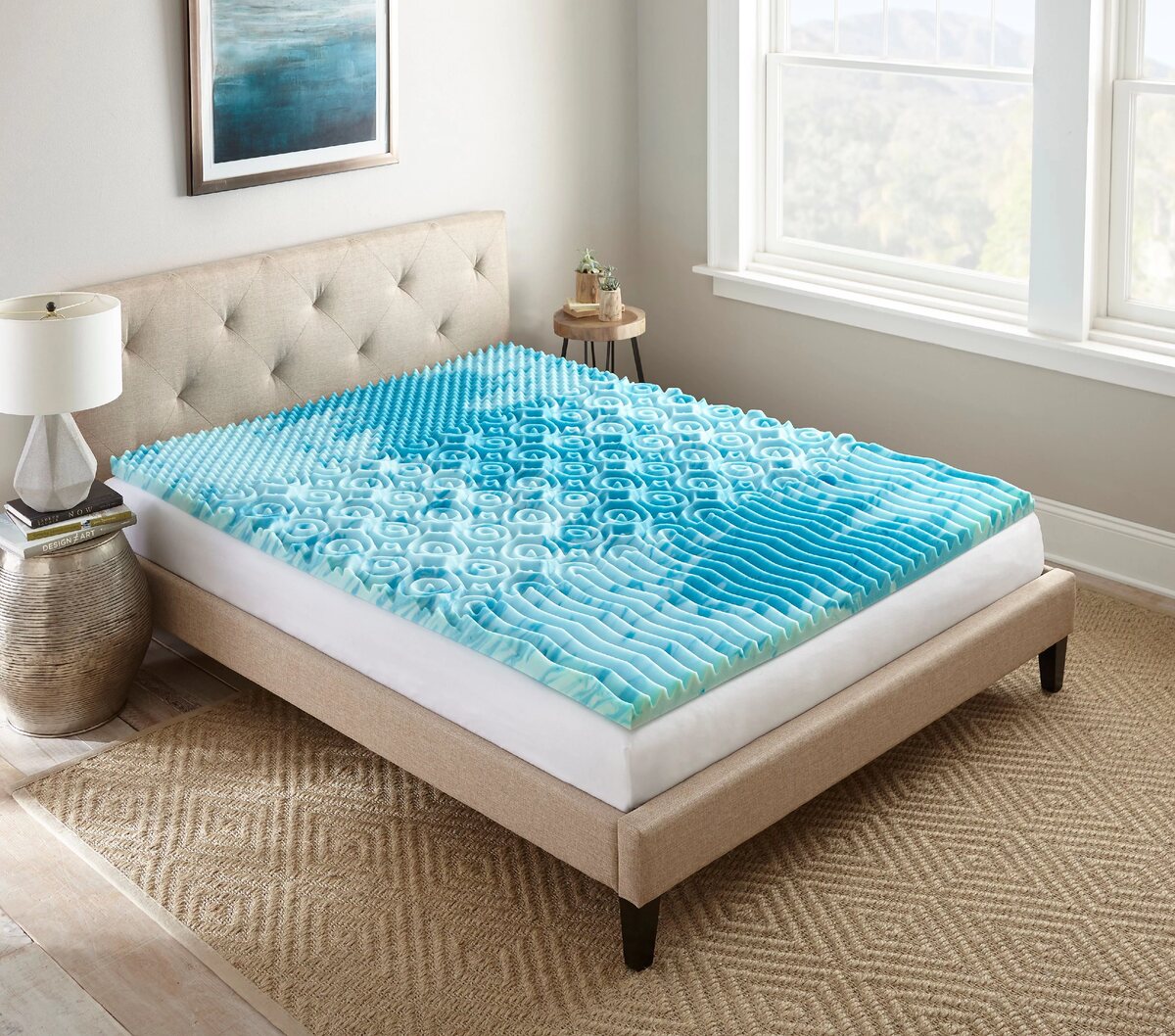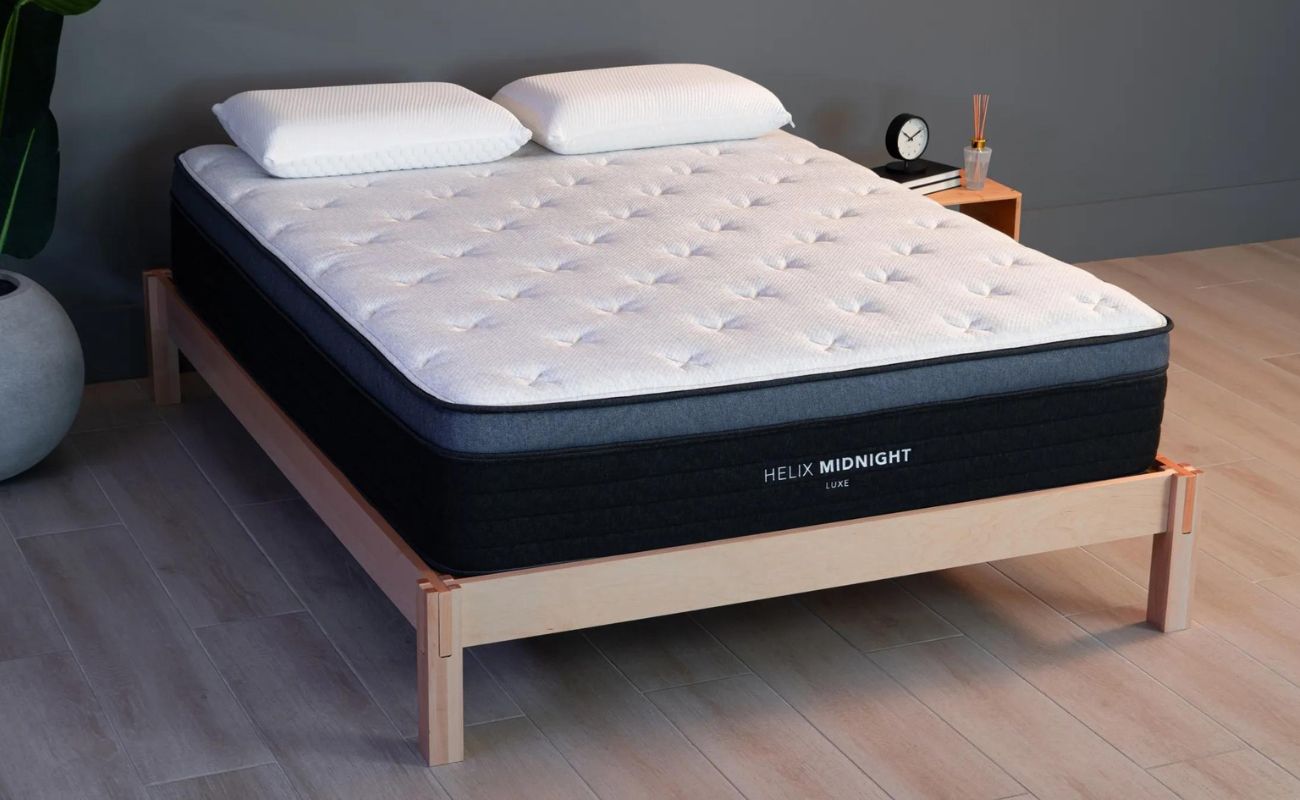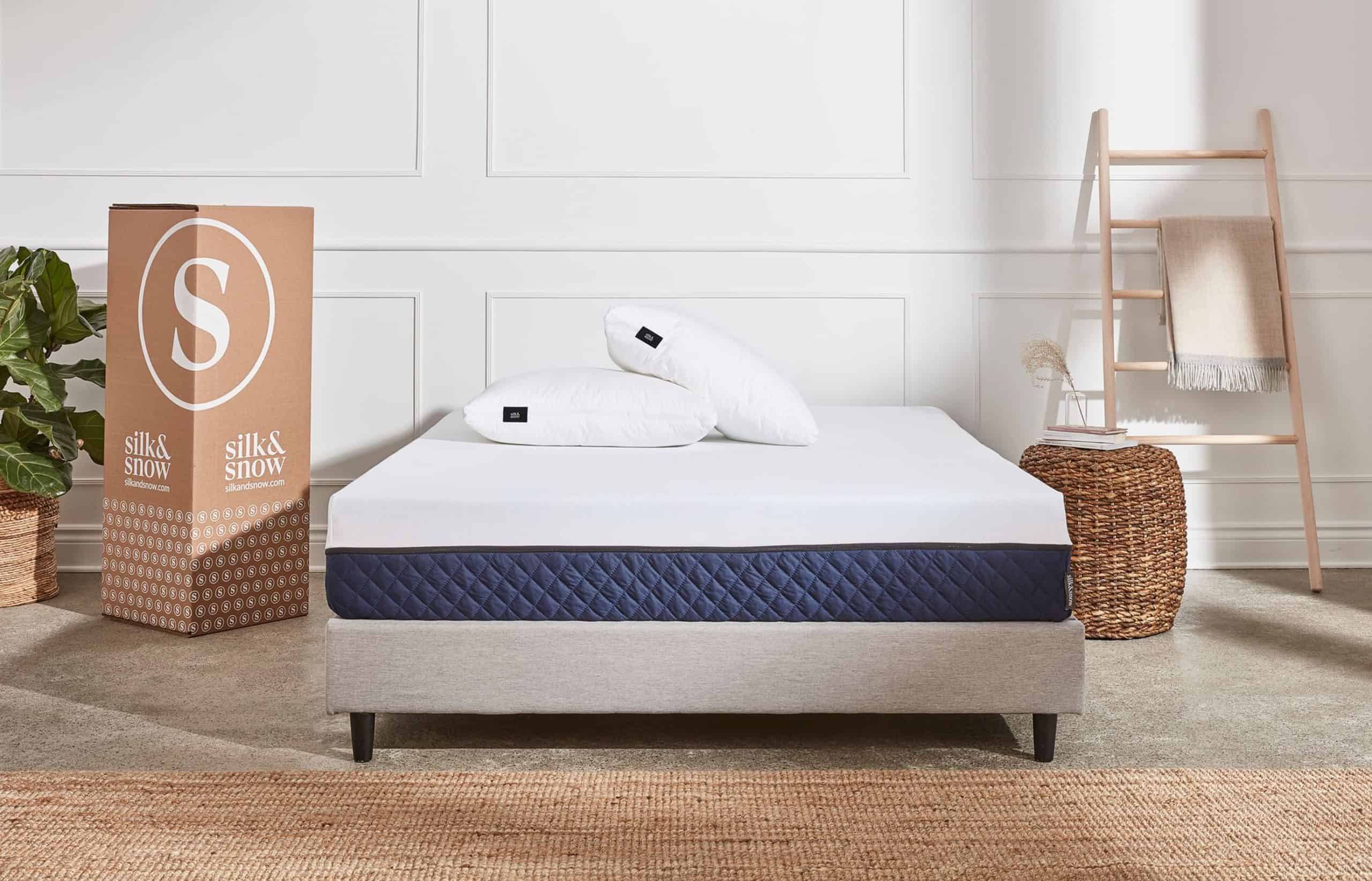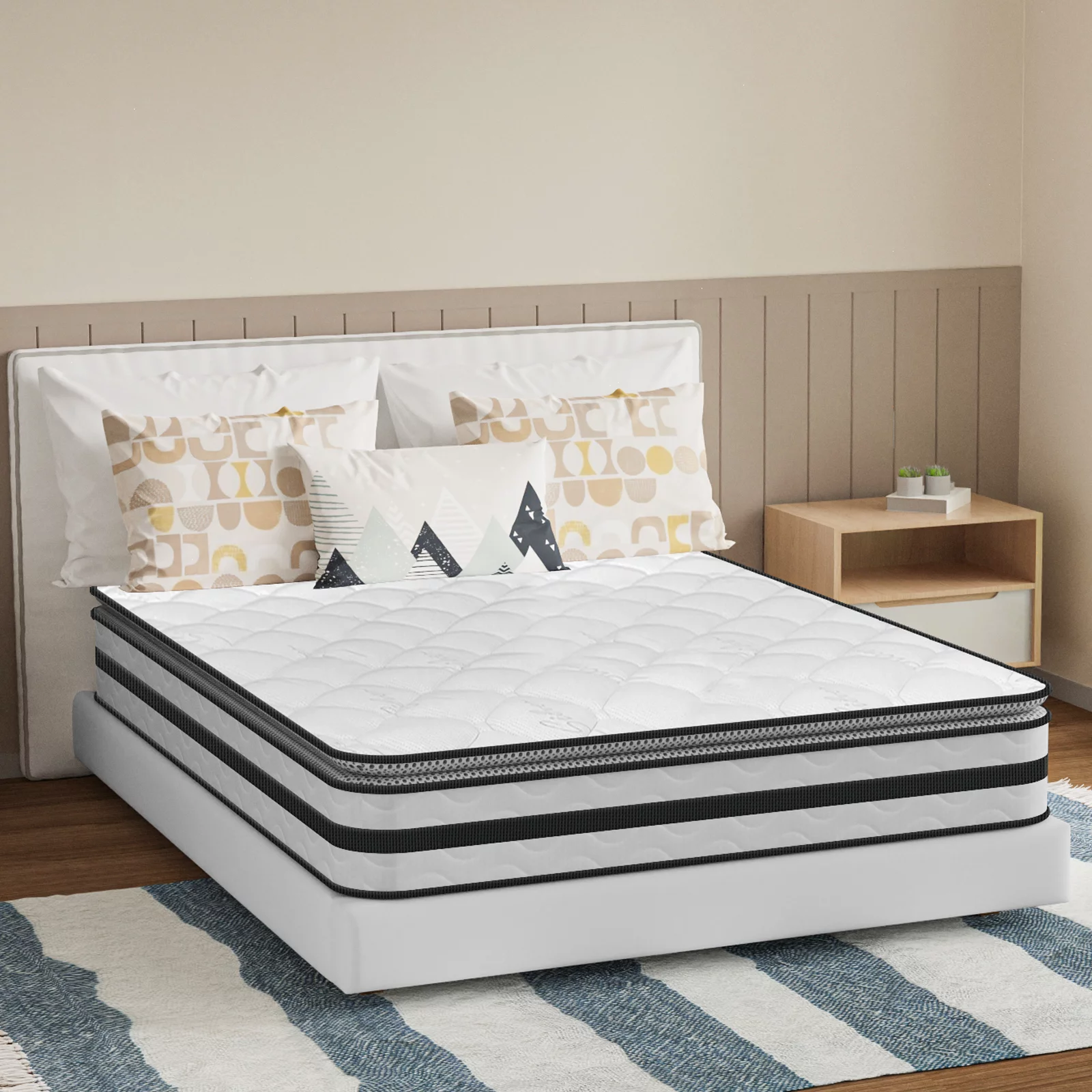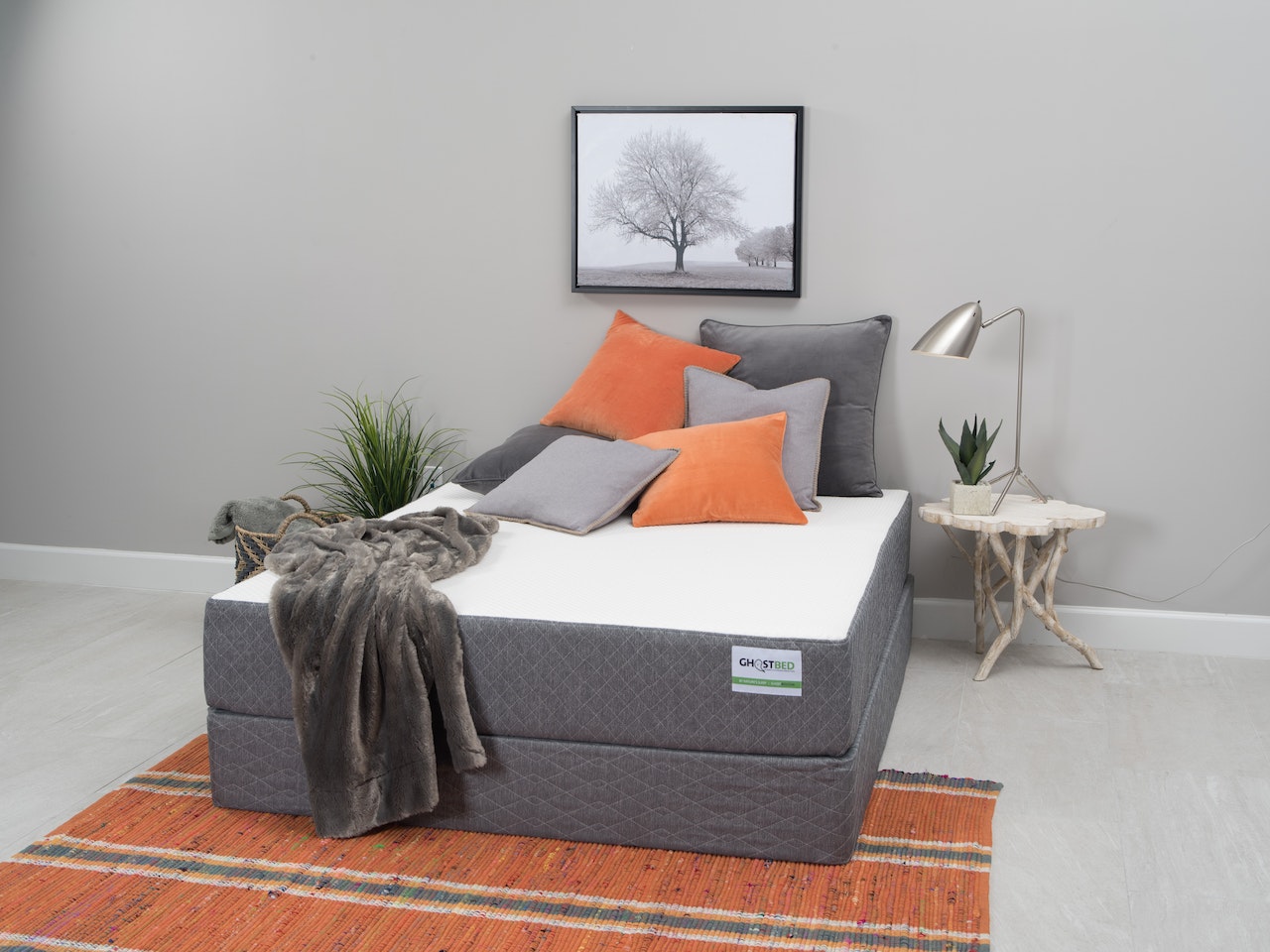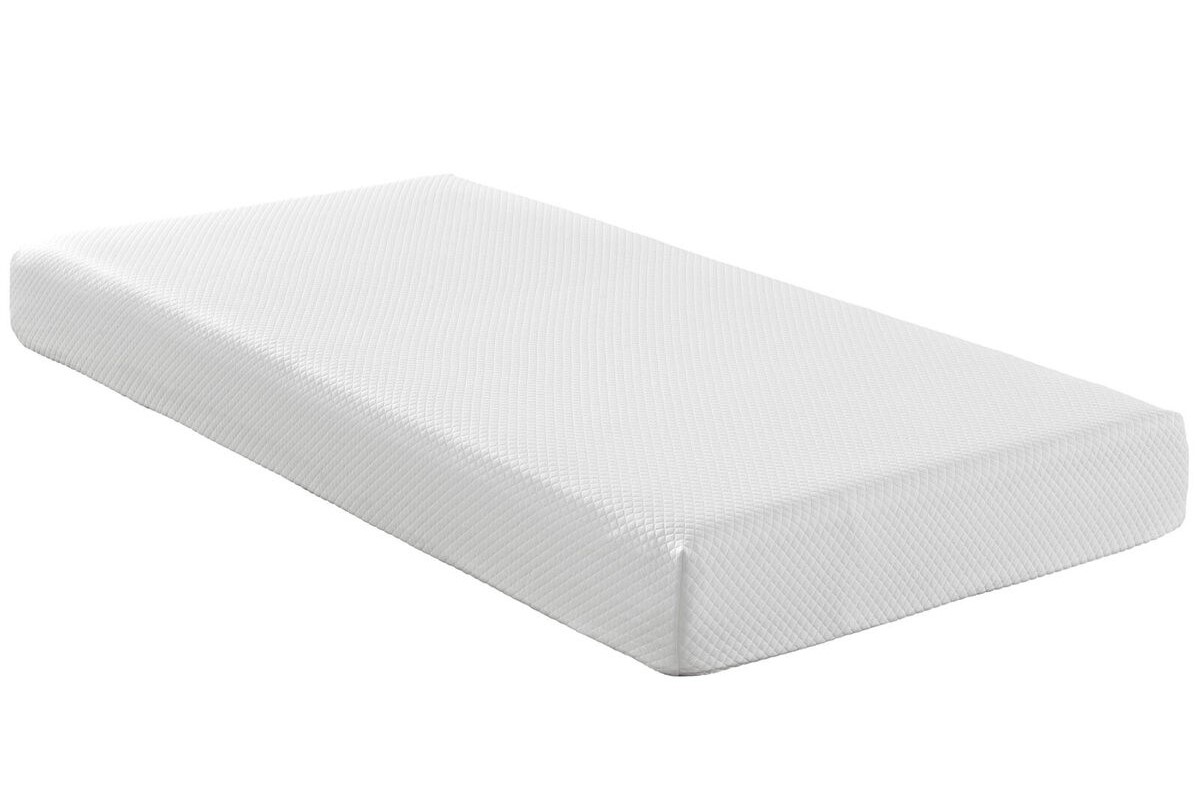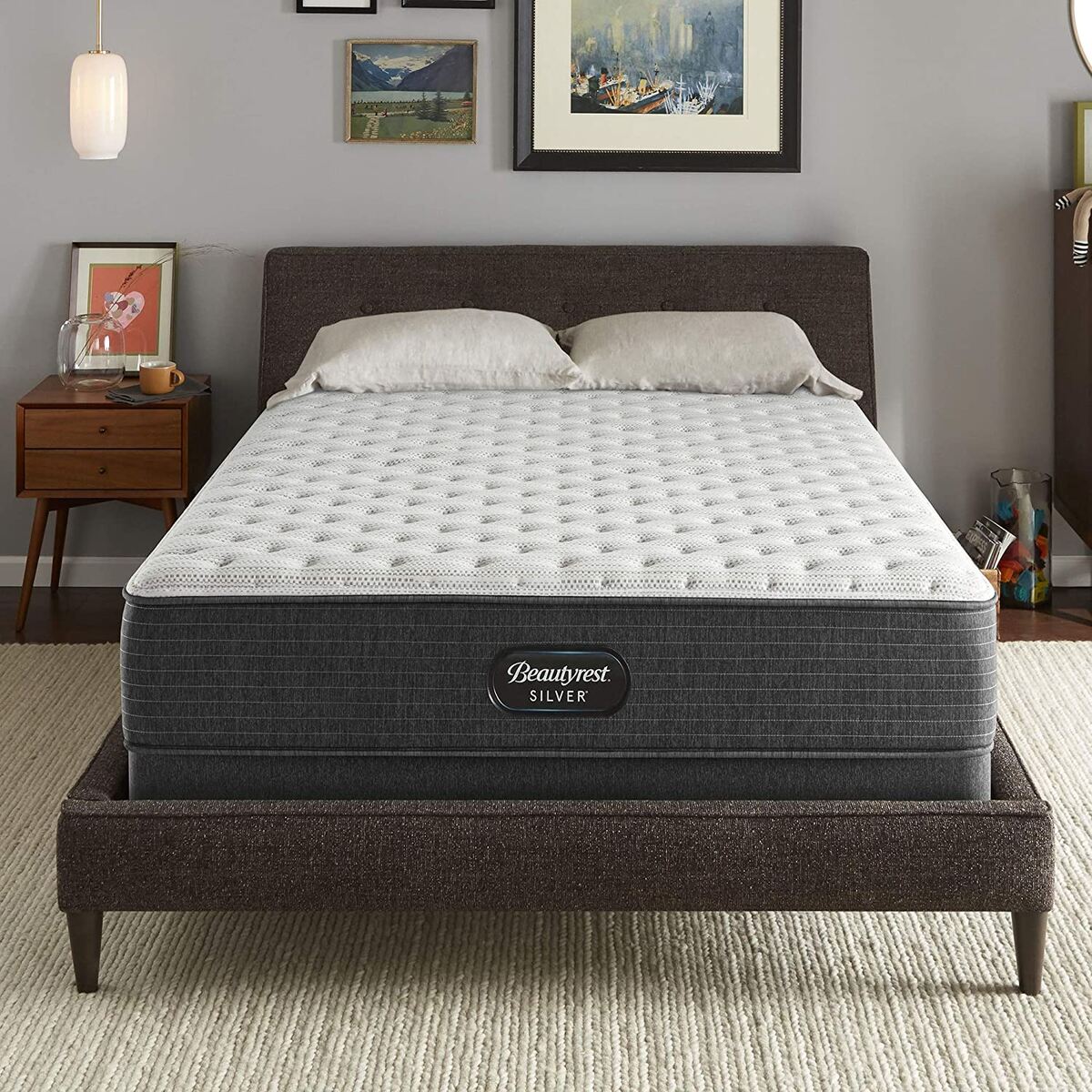Home>Furniture>Bedroom Furniture>Which Mattress Is Bigger: Twin Or Full


Bedroom Furniture
Which Mattress Is Bigger: Twin Or Full
Modified: December 7, 2023
Find out which mattress size is larger between a twin and full size. Explore our selection of bedroom furniture to make the right choice for your space.
(Many of the links in this article redirect to a specific reviewed product. Your purchase of these products through affiliate links helps to generate commission for Storables.com, at no extra cost. Learn more)
Introduction
Choosing the right size mattress is an important decision when it comes to furnishing your bedroom. Among the various options available, twin and full-size mattresses are popular choices. But how do they compare? Which one is bigger? In this article, we will delve into the key differences between twin and full mattresses to help you make an informed decision.
Size is a crucial factor to consider when shopping for a mattress, as it determines the amount of space you will have for sleeping and relaxing. While both twin and full mattresses have their own advantages, understanding their dimensions, sleeping capacity, and suitability for different room sizes is essential to ensure a comfortable and functional sleep environment.
In the next sections, we will provide a comprehensive comparison of twin and full-size mattresses, discussing dimensions, sleeping capacity, room recommendation, price points, comfort, and more. By the end of this article, you will have a clear understanding of which mattress size suits your needs best.
Key Takeaways:
- Twin mattresses are ideal for smaller rooms and solo sleepers, offering a cost-effective and space-saving solution. However, their narrow width may limit movement and make them less suitable for couples.
- Full-size mattresses provide extra space for stretching out and comfortably accommodate couples. While versatile, they require more space and come at a slightly higher price point.
Read more: Which Mattress Is Bigger: King Or Queen
Size Overview
Before diving into the specifics, let’s start with a general understanding of the size differences between twin and full mattresses.
A twin mattress, also known as a single mattress, is the smallest standard mattress size available. It typically measures 38 inches wide and 75 inches long. Twin mattresses are ideal for children, teenagers, and single sleepers who are looking for a compact and space-saving option. They are commonly found in guest rooms, dormitories, and smaller bedrooms.
On the other hand, a full mattress, also known as a double mattress, is larger than a twin mattress. It typically measures 54 inches wide and 75 inches long. Full mattresses provide more width and length, offering extra space for individuals or couples who like to stretch out while sleeping. They are a popular choice for teenagers transitioning from a twin-size bed to accommodate their growing bodies. Full-size mattresses are also suitable for guest rooms and small to medium-sized bedrooms.
Now that we have a basic understanding of the size differences, let’s delve deeper into the specific dimensions of each mattress size.
Dimensions
When it comes to size, twin and full mattresses differ in both width and length. Let’s take a closer look at the specific dimensions of each mattress size:
- Twin Mattress Dimensions: A standard twin mattress measures 38 inches wide and 75 inches long. This makes it narrower and shorter compared to a full-size mattress. The compact size of a twin mattress is great for smaller rooms or for those who prefer a snug sleep space.
- Full Mattress Dimensions: A full mattress measures 54 inches wide and 75 inches long. It is wider and longer than a twin mattress, providing more sleeping surface area for individuals or couples. The additional width and length make a full-size mattress a versatile option for various sleep needs.
It’s important to consider your personal preferences and the available space in your bedroom when choosing between a twin and full-size mattress. If you have limited space or prefer a more compact sleeping area, a twin mattress might be the right choice for you. However, if you have a bit more room and desire extra space to spread out, a full-size mattress could better meet your needs.
Remember to take into account any existing furniture or other items in your bedroom when determining the appropriate mattress size. You want to ensure that the dimensions of the mattress align well with the overall layout and functionality of your sleep space.
Sleeping Capacity
Understanding the sleeping capacity of a mattress is crucial, especially if you plan to share your bed or have occasional guests. Let’s explore how twin and full-size mattresses accommodate different sleeping arrangements:
- Twin Mattress Sleeping Capacity: A twin mattress is designed for a single sleeper. It provides enough space for one person to sleep comfortably, making it an ideal choice for children, teenagers, or solo sleepers. However, due to its narrow width, it may not be suitable for those who prefer a lot of space or tend to move around during sleep.
- Full Mattress Sleeping Capacity: A full-size mattress offers more sleeping space compared to a twin. It can comfortably accommodate a single sleeper who prefers extra room or provide ample space for a couple. If you need a mattress that allows for movement during sleep or if you have a partner who tends to spread out, a full-size mattress would be a better fit. Additionally, a full-size bed is also suitable for guest rooms as it can comfortably accommodate one or two guests.
Consider your sleeping preferences, whether you sleep alone or with a partner, and the likelihood of having guests when choosing the right mattress size for you. The sleeping capacity of the mattress will play a significant role in ensuring a comfortable night’s sleep for you and your loved ones.
Room Recommendation
Choosing the right mattress size involves considering the dimensions of your bedroom and how the mattress will fit into the overall layout. Let’s explore the room recommendations for twin and full-size mattresses:
- Twin Mattress Room Recommendation: Twin mattresses are highly versatile and can comfortably fit in various room sizes. They are an excellent choice for smaller rooms, such as kids’ bedrooms, guest rooms, or studio apartments, where space is limited. Their compact size allows for more freedom to incorporate other furniture and create a functional and cozy sleep environment.
- Full Mattress Room Recommendation: Full-size mattresses require a bit more space compared to twin mattresses. They are a suitable option for medium-sized bedrooms or larger guest rooms, where there is more room to accommodate the wider dimensions. If you have ample space and prefer a larger sleep surface, a full-size mattress can provide the comfort and space you desire.
Keep in mind that while room size is an important factor, it is also essential to leave enough space for movement and to create a harmonious and visually appealing bedroom. Take measurements of your bedroom and consider the placement of other furniture and accessories to determine which mattress size would be the best fit.
Ultimately, the goal is to create a balanced and comfortable sleep environment that meets your personal style and needs.
A full-size mattress is bigger than a twin-size mattress. A twin mattress measures 38 inches wide by 75 inches long, while a full mattress measures 54 inches wide by 75 inches long.
Read more: How To Store A Twin Mattress
Price Comparison
When it comes to purchasing a mattress, price is an important consideration for many buyers. Let’s compare the price ranges of twin and full-size mattresses:
- Twin Mattress Price: Twin mattresses are generally more affordable compared to their full-size counterparts. The compact size and lower material requirements contribute to their lower price range. Prices can vary based on the brand, materials used, and additional features like pillow tops or memory foam. On average, you can expect to find twin mattresses in the range of $100 to $500, although there are options both below and above this range.
- Full Mattress Price: Full-size mattresses tend to be slightly more expensive than twin mattresses. The larger dimensions and increased material needed contribute to the higher price range. Like twin mattresses, the price can vary based on brand, materials, and additional features. On average, full-size mattresses range from $200 to $800, although higher-end models can go even beyond this range.
It’s important to note that prices can vary significantly depending on the brand, quality of materials, and other factors. It’s advisable to set a budget range and weigh the features, durability, and overall value of the mattress you are considering.
Remember to factor in the long-term investment when making your decision. A good-quality mattress can provide years of comfort and support, contributing to your overall well-being and quality of sleep.
Comfort and Space
Comfort and the amount of space you have while sleeping are important factors to consider when choosing a mattress. Let’s explore how twin and full-size mattresses differ in terms of comfort and space:
- Twin Mattress Comfort and Space: Twin mattresses provide a cozy and compact sleep space. They are ideal for children, teenagers, or individuals who prefer a snug sleeping area. While twin mattresses offer ample length for most people, the narrower width may limit movement for those who need more space or tend to spread out while sleeping.
- Full Mattress Comfort and Space: Full-size mattresses offer more width and length compared to twin mattresses. This additional space allows for more freedom of movement and the ability to stretch out. It is a suitable choice for individuals or couples who prefer a more spacious sleep surface. The extra space can make a significant difference in comfort, especially for those who tend to move around during sleep.
The level of comfort also depends on other factors such as the type of mattress (e.g., memory foam, innerspring, latex), firmness level, and individual preferences. It’s important to test different mattresses and consider factors such as support, pressure relief, and motion isolation to determine the best comfort level for you.
Remember that everyone’s comfort preferences are unique, so it’s important to choose a mattress that aligns with your specific needs and provides a comfortable space for a good night’s sleep.
Pros and Cons
Like any purchasing decision, there are pros and cons to consider when choosing between a twin and full-size mattress. Let’s explore the advantages and disadvantages of each:
- Twin Mattress Pros:
- Space-saving: Twin mattresses are perfect for smaller rooms or shared spaces.
- Cost-effective: Twin mattresses are generally more affordable compared to full-size mattresses.
- Easy to move: Due to their smaller size and weight, twin mattresses are easier to move, transport, and maneuver.
- Twin Mattress Cons:
- Limited space: The narrow width may not provide enough room for those who prefer to sprawl or move around during sleep.
- Less suitable for couples: Twin mattresses are designed for single sleepers and may not comfortably accommodate two people.
- Full Mattress Pros:
- More sleeping surface: Full-size mattresses offer more width and length, providing extra space for stretching out and movement during sleep.
- Accommodates couples: Full mattresses are suitable for couples who need more space while sleeping.
- Versatile: Full-size mattresses can be used in various room sizes and offer flexibility for different sleep arrangements.
- Full Mattress Cons:
- Requires more space: Full mattresses are wider than twin mattresses and may not be suitable for smaller bedrooms with limited space.
- Higher cost: Full-size mattresses tend to be more expensive compared to twin mattresses.
- Heavier: Due to their larger size, full mattresses may be heavier and more challenging to move.
Consider these pros and cons in relation to your specific needs, space limitations, and budget when making your decision. It’s important to weigh the advantages and disadvantages to find the mattress that aligns best with your preferences and requirements.
Conclusion
Choosing the right mattress size is an important decision when it comes to furnishing your bedroom. Whether you opt for a twin or full-size mattress, both have their own advantages and considerations. Let’s recap what we’ve discussed:
A twin mattress is the smallest standard mattress size, perfect for smaller rooms or individuals who prefer a more compact sleep space. It offers a cost-effective and space-saving solution, making it ideal for children, teenagers, or solo sleepers. However, its narrow width may limit movement and it may not be the best choice for couples or those who need more sleeping surface area.
A full-size mattress, on the other hand, provides more width and length compared to a twin mattress. It offers additional space for stretching out and accommodates couples comfortably. Full-size mattresses are versatile and suitable for medium-sized bedrooms or guest rooms. However, they do require more space and come at a slightly higher price point.
When making your decision, consider factors such as the dimensions of your room, your sleeping preferences, budget, and the level of comfort you desire. Test different mattresses to ensure the one you choose provides the necessary support and ergonomic features that promote a good night’s sleep.
Ultimately, the choice between a twin and full-size mattress depends on your personal needs and the specific circumstances of your bedroom. If you have limited space and a single sleeper, a twin mattress may be the best fit. If you have more room and desire extra space for movement or have a partner sharing the bed, a full-size mattress might be the better choice.
Remember, the goal is to create a comfortable and inviting sleep environment that meets your needs and preferences. Take your time to research, compare options, and choose a mattress size that will ensure a restful night’s sleep and contribute to your overall well-being.
Frequently Asked Questions about Which Mattress Is Bigger: Twin Or Full
Was this page helpful?
At Storables.com, we guarantee accurate and reliable information. Our content, validated by Expert Board Contributors, is crafted following stringent Editorial Policies. We're committed to providing you with well-researched, expert-backed insights for all your informational needs.
